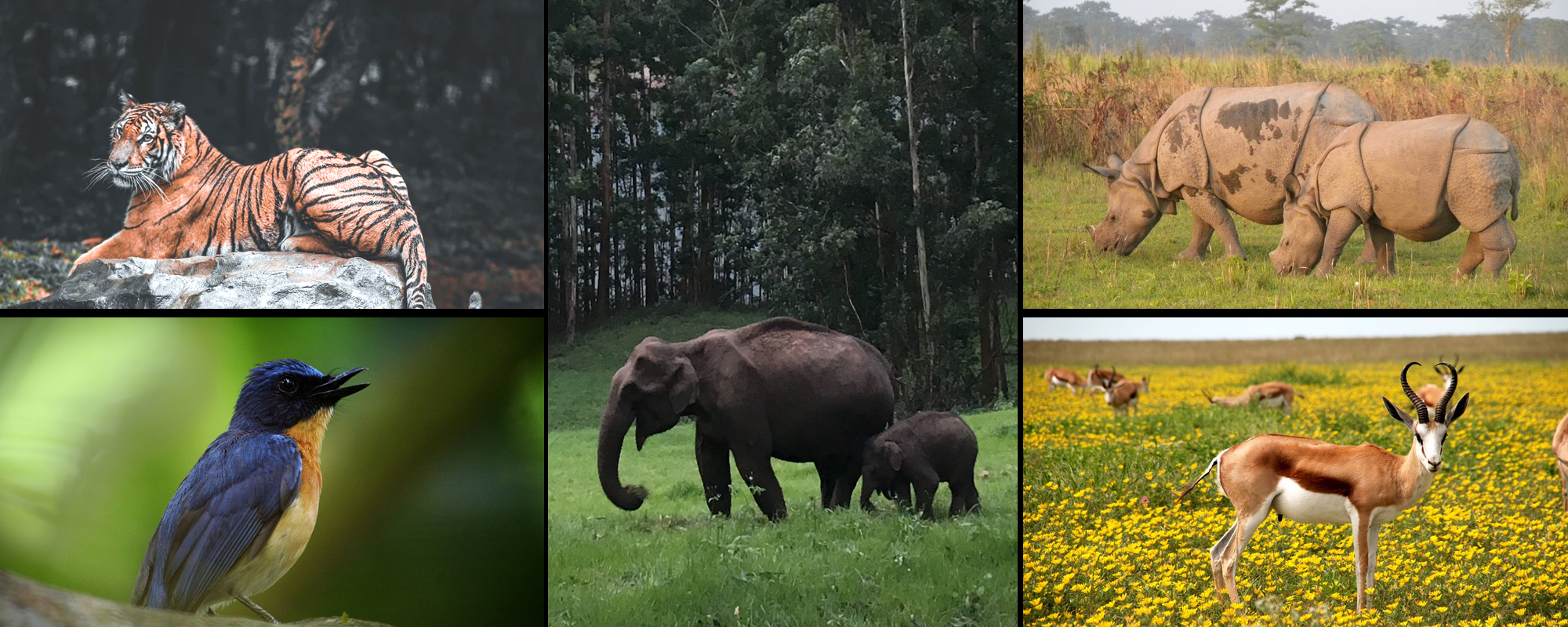
Located in the beautiful white desert of the Rann of Kutch also known as Little Rann of Kutch, the Wild Ass Sanctuary in Kutch, Gujarat, is the only habitat of the Wild Ass in India. Established in 1973 with an area of 5000sq. kilometers and covering a minor portion of the cities like Sundernagar, Rajkot Patan, Banaskantha, and Kutch district, the sanctuary was set up to protect the endangered Indian Wild Ass, commonly known as Ghudkhar, and is the largest wildlife sanctuary in Gujarat.
Quite similar to the Tibetan Kiang, the wild ass is also recognized by a dark stripe along its back. Known as a high-speed animal, the wild ass stays in masses led by stallions and survive by wandering between the grassy bets through the season in the lookout for food. At present, the sanctuary inhabits over 3000 wild asses which can best be seen in and around October and November. Apart from the wild ass, the sanctuary is home to over 32 species of mammals and 75,000 birds including migratory birds as well.
Visitors can explore the sanctuary for a diverse range of fauna and its breathtaking landscape along with the tribal population namely Rabari and Bharwad tribes that have their dwellings there. To have a thrilling and unforgettable experience, a jeep safari tour is advised to witness the white desert that looks even more marvelous during a full-moon night and to spot the exotic wildlife species. The Wild Ass Sanctuary is nothing less than an empyrean for tourists, needless to say of all kinds.
Talking about the flora, this area of Kutch remains dry most of the year and apart from some thorny bushes and cactus no large trees or plants are found here. The wild asses mainly survive on various species of grasses grown here.
Mammals: Indian Wild Ass, Chinkara, Indian Desert Fox, White-Footed Desert Fox, Jackals, Caracals, Nilgais, Indian Wolves, Blackbucks, Striped Hyena.
Birds: Sandgrouses, Desert Wheatears, Larks, White-Browned Bulbul, Indian Coursers, Stoneplovers, Shrikes, Ducks, Geese, Ibis, Spoonbills, Godwits, Stints, Sandpipers, Shanks, Moorhens, Saras Cranes, Indian Flamingoes, Pelicans, etc.
The climate of the region is extreme with May being the hottest month with a temperature of around 31 degrees Celsius while January is the coldest month with an average temperature of 11 degrees Celsius. During the monsoons, the entire area gets flooded with rainwater.
Best time to visit the wildlife sanctuary is between October and March when the temperature is low and the weather is pleasant to explore the area around. This is the best time to spot the wild ass in herds and many migratory birds as well.
Nearest Train Station: The nearest railhead is in Dhrangadhra at a distance of 16km apart from Ahmedabad (130km) and Rajkot (175km). Cabs and buses are easily available from the station which is well-connected by a road network to the sanctuary.
Nearest Airport: Bhuj, situated at around 150km is the nearest airport from the sanctuary. There are regular flights from other cites of the country and the airport is well-connected by road to the sanctuary.
Road Accessibility : The wildlife sanctuary is well-connected by a road network and connects all the major cities and places near Gujarat and other cities of the country as well.
Copyright 2012-2022 Indiamap Digital Pvt Ltd. All rights reserved. Privacy Policy | Terms of Use